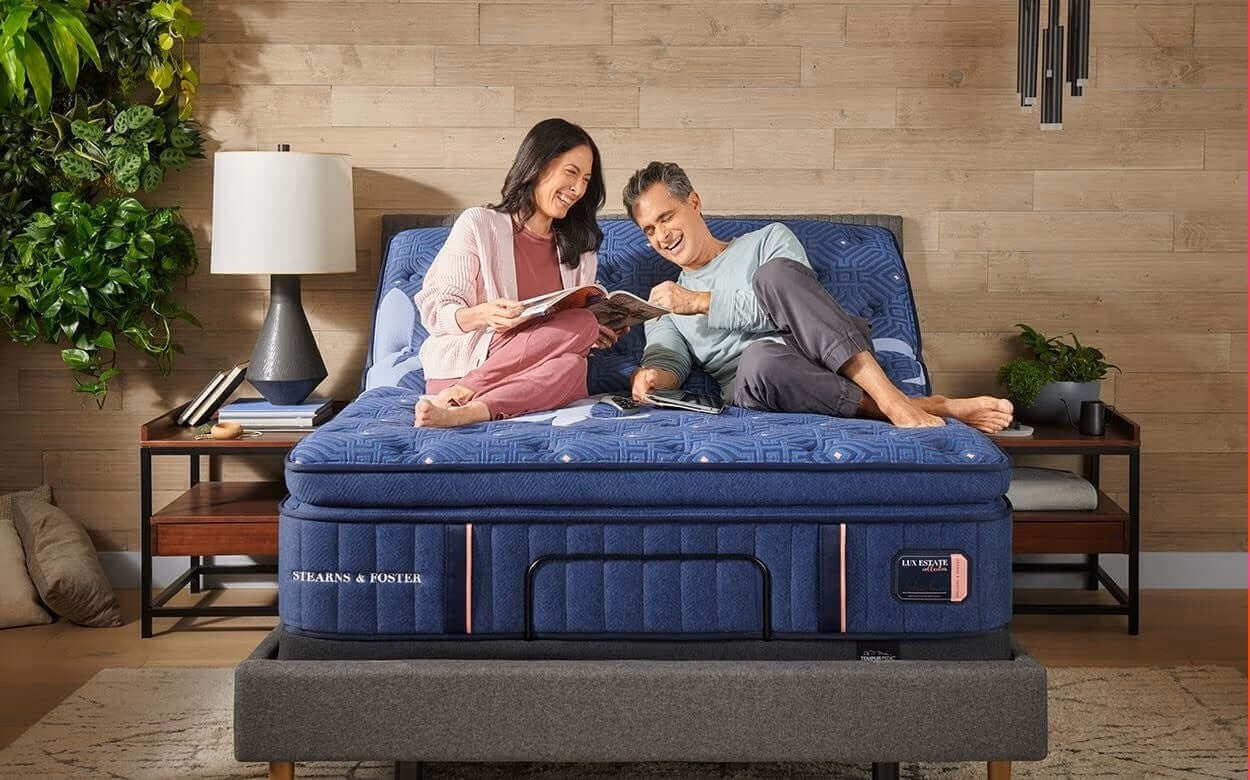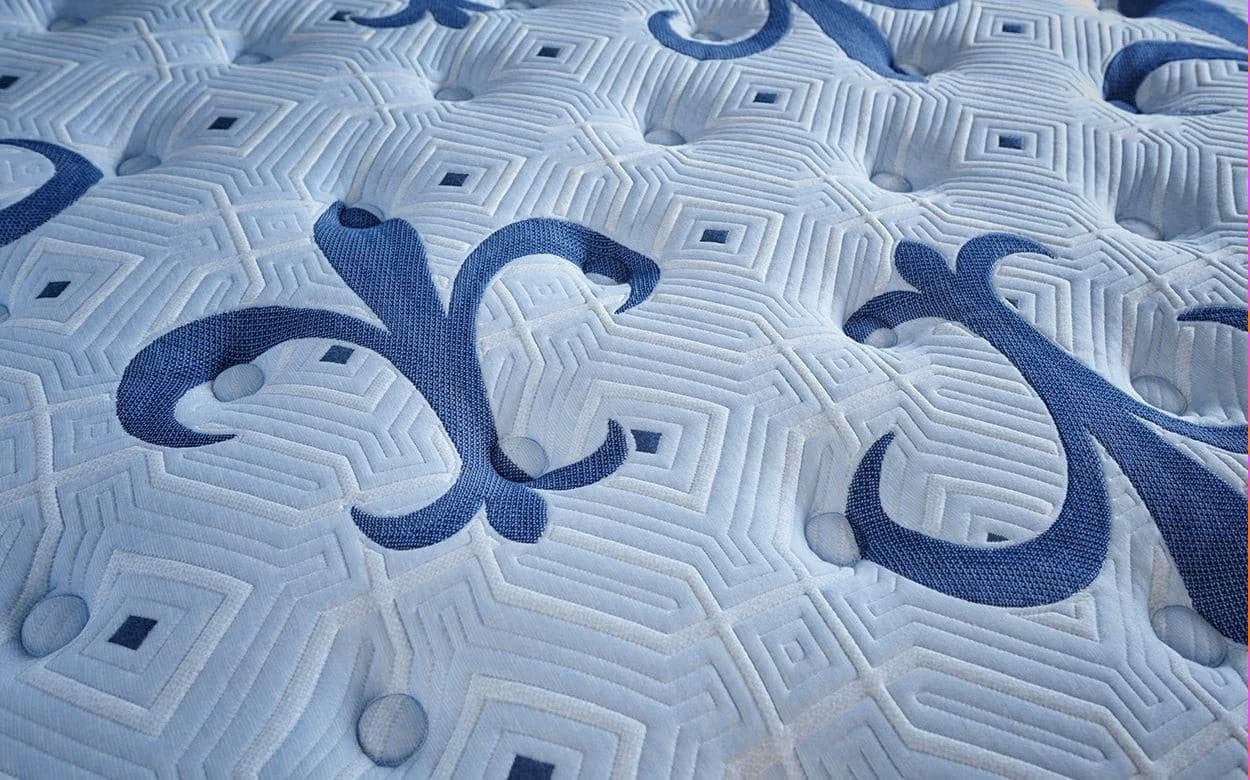When most people think of a “traditional mattress” the image that comes to mind is an innerspring mattress. These mattresses, built with steel coil support systems, have been around since the late 1800s and dominated the bedding industry for decades. But in 2025, the sleep industry looks very different. We now have memory foam, latex, hybrid, and smart mattresses competing for attention.
So the big question is: Are innerspring mattresses still a good choice in 2025, or have they become outdated compared to modern alternatives?
This blog dives into the history, benefits, drawbacks, innovations, and current relevance of innerspring mattresses, helping you decide whether they’re still worth buying this year.
Table of Contents
- Introduction
- Key Takeaways
- What Is an Innerspring Mattress?
- A Brief History of Innerspring Mattresses
- Advantages of Innerspring Mattresses in 2025
- Drawbacks of Innerspring Mattresses
- Technological Improvements
- Innerspring vs. Memory Foam vs. Hybrid
- Who Should Still Buy Innerspring Mattresses?
- Product Reviews: Best Innerspring Mattresses of 2025
- Comparison Table
- Visual Graph
- Conclusion
- FAQs
Key Takeaways
- Innerspring mattresses are still relevant in 2025, particularly for sleepers who value bounce, airflow, and affordability.
- Modern innersprings feature pocketed coils, hybrid layers, and improved durability compared to older designs.
- They are not always the best option for people seeking deep pressure relief or motion isolation, where memory foam or hybrids excel.
- Innerspring mattresses remain one of the most budget-friendly and widely available mattress types.
- The ideal buyer in 2025 is someone who prefers a responsive, cool-sleeping surface with firmer support.
What Is an Innerspring Mattress?
An innerspring mattress is defined by its coil-based support system, which serves as the core structure. Over the coils, manufacturers add layers of padding, foam, or pillow tops for comfort. The springs provide bounce, durability, and airflow.
Types of coils used in innerspring mattresses:
- Bonnell coils – hourglass-shaped, oldest style, budget-friendly.
- Offset coils – hinged coils for better contouring.
- Continuous coils – made from a single wire, durable but less contouring.
- Pocketed coils (Marshall coils) – individually wrapped for reduced motion transfer and improved comfort.
A Brief History of Innerspring Mattresses
- 1871: Heinrich Westphal invents the first coil spring mattress in Germany.
- 1900s–1980s: Innersprings dominate the mattress industry worldwide.
- 1990s–2000s: Memory foam and latex gain popularity.
- 2010s–2020s: Hybrid mattresses emerge, combining coils with foam/latex.
- 2025: Innerspring mattresses remain popular, but now redesigned with modern features to compete with foam and hybrid rivals.
Advantages of Innerspring Mattresses in 2025
1. Affordability – They are still among the cheapest mattress options.
2. Airflow & Cooling – Coils promote natural ventilation, making them cooler than most foam beds.
3. Bounce & Responsiveness – Great for combination sleepers and those who dislike the “sinking” feeling of foam.
4. Variety of Firmness Levels – From extra-firm orthopedic models to plush pillow-top designs.
5. Widely Available – Found in nearly every showroom and online store.
Drawbacks of Innerspring Mattresses Compared to Modern Alternatives
- Motion Transfer – Couples may feel each other’s movements unless coils are individually pocketed.
- Durability – Cheaper innerspring models may sag after 5–7 years.
- Pressure Relief – Not as contouring as memory foam or latex.
- Noise – Springs may squeak over time.
- Edge Support Issues – Lower-end models sometimes lack reinforced edges.
Technological Improvements in Innerspring Mattresses
In 2025, innerspring mattresses are no longer the same as your grandmother’s bed. Manufacturers have added features such as:
- Pocketed coils with zoned support for targeted spinal alignment.
- Hybrid layers that combine coils with memory foam or latex.
- Cooling fabrics and gel-infused toppers to enhance airflow.
- Edge reinforcement systems to prevent sagging.
- Smart innerspring beds integrated with adjustable bases and sleep tracking.
Innerspring vs. Memory Foam vs. Hybrid: A Comparison
|
Feature |
Innerspring |
Memory Foam |
Hybrid |
|
Support |
Strong coil base, firm feel |
Contouring support |
Balanced support from coils + foam |
|
Comfort |
Bouncy, less contouring |
Deep contouring, “hugged” feel |
Mix of bounce + contouring |
|
Cooling |
Excellent airflow |
Can trap heat (unless gel-infused) |
Moderate cooling |
|
Motion Isolation |
Moderate (better with pocketed coils) |
Excellent |
Good |
|
Durability |
6–8 years average |
8–10 years |
8–12 years |
|
Price Range |
$300–$1,500 |
$600–$2,500 |
$900–$3,000 |
Who Should Still Buy Innerspring Mattresses?
In 2025, innerspring mattresses are still a great choice for certain sleepers:
- Motion Transfer – Couples may feel each other’s movements unless coils are individually pocketed.
- Durability – Cheaper innerspring models may sag after 5–7 years.
- Pressure Relief – Not as contouring as memory foam or latex.
- Noise – Springs may squeak over time.
- Edge Support Issues – Lower-end models sometimes lack reinforced edges.
Product Reviews: Best Innerspring Mattresses of 2025
1. Eastman House Spruce Medium Pillow-Top Innerspring Mattress
Overview:
This 11" mattress blends breathable comfort with reinforced support, making it ideal for back and combination sleepers. It features a plush pillow-top atop a 432 Verti-Coil spring system and zoned foam encasement, all backed by a 10-year warranty.
Key Features:
- Health-sense breathable, moisture-wicking fabric cover for temperature regulation
- 432 Verti-Coil spring system for durable, responsive support
- Extra-Firm Eco-Flex™ support foam layer for enhanced spinal alignment
- Tri-Zoned foam encasement targeting shoulders, hips, and legs for better posture
- Medium-feel pillow-top combining softness with firmness for versatile comfort
|
Pros |
Cons |
|
Breathable and cooling fabric helps regulate temperature |
Plush top may take time to adjust for some users |
|
Zoned support provides balanced pressure relief |
Heavier weight, might be harder to move |
|
Durable coil system with long-term warranty |
May not suit those who prefer firmer or all-foam feel |
2. Spring Air Dogwood Euro-Top 10" Mattress (Value Collection)
Overview:
A budget-friendly, medium-firm innerspring mattress featuring a 7" continuous-coil system, plush upholstery layers, and full foam encasement. Ideal for value-conscious shoppers, guest rooms, or everyday use complete with a 10-year warranty.
Key Features:
- 576-count continuous coil support for reliable, even comfort
- Fully foam-encased core for enhanced edge-to-edge stability
- Soft quilt foam and plush upholstery layers for comfort and cushioning
- Stretch-knit, breathable fabric cover with a natural FR barrier for airflow and safety
- Medium-firm feel offers balanced support suitable for back and stomach sleepers
|
Pros |
Cons |
|
Affordable option with solid support |
Less motion isolation compared to pocketed-coil designs |
|
Good edge support from foam encasement |
Euro-top may compress over time with heavy use |
|
Breathable materials help with cooling |
Limited advanced features it’s best as a basic, cost-effective choice |
3. Diamond Mattress Justice Euro-Top Innerspring Mattress
Overview:
This medium-firm Euro-top mattress combines classic innerspring support with plush cushioning. It offers responsive performance, reinforced edges, breathable cover fabric, and comes with a 10-year limited warranty.
Key Features:
- Soft Euro-top layer for gentle pressure relief without excessive sinkage
- Traditional innerspring core delivers bounce, airflow, and spinal alignment
- Edge-to-edge stability with reinforced edges maximizes usable surface area
- Breathable quilted fabric cover that helps wick away heat and moisture
- Compatible with adjustable bases; includes 10-year limited warranty
|
Pros |
Cons |
|
Plush, balanced feel suitable for multiple sleeping positions |
May not provide enough firmness for heavier individuals needing extra support |
|
Good edge support and flexibility |
Euro-top layer may wear down faster under heavy, long-term use |
|
Compatible with adjustable beds adds versatility |
Simpler innerspring design lacks advanced zoning or hybrid finishes |
Comparison Table: Mattress Types Side-by-Side
|
Mattress Type |
Best For |
Price Range |
Lifespan |
Cooling |
Motion Isolation |
|
Innerspring |
Hot sleepers, budget buyers |
$300–$1,500 |
6–8 yrs |
Excellent |
Moderate |
|
Memory Foam |
Pressure relief, couples |
$600–$2,500 |
8–10 yrs |
Moderate |
Excellent |
|
Hybrid |
Balanced comfort/support |
$900–$3,000 |
8–12 yrs |
Good |
Good |
Visual Graph: Support vs. Comfort vs. Cooling

Conclusion
Innerspring mattresses are still a good choice in 2025, but not for everyone. If you’re looking for affordability, cooling, and bounce, they remain highly relevant. However, if you want deep pressure relief, motion isolation, and long-term durability, a hybrid or memory foam mattress may serve you better.
The bottom line: Innerspring mattresses aren’t outdated they’ve simply evolved. With modern upgrades like pocketed coils and hybrid layers, they still deserve a place in the mattress industry today.
Frequently Asked Questions
1. Are innerspring mattresses outdated in 2025?
No. While newer types like memory foam and hybrid are popular, innerspring beds remain relevant, especially for budget-conscious and hot sleepers.
2. How long do innerspring mattresses last?
Most innerspring mattresses last 6–8 years, though premium models with reinforced coils can last up to 10 years.
3. Do innerspring mattresses sleep cooler than memory foam?
Yes. The coil system promotes airflow, making innersprings cooler than most all-foam mattresses.
4. Are pocketed coils better than traditional coils?
Yes. Pocketed coils reduce motion transfer and provide better contouring, making them superior to traditional Bonnell coils.
5. Are innerspring mattresses good for back pain?
They can be, especially firmer models with zoned support. However, memory foam or hybrids often provide better pressure relief.
6. Can I use an innerspring mattress with an adjustable bed?
Yes, but only if the innerspring mattress is flexible enough check with the manufacturer.
7. Do innerspring mattresses sag quickly?
Cheap models may sag within 5 years. Higher-quality innersprings with reinforced edges last longer.
8. What’s the price range for a good innerspring mattress in 2025?
Expect to pay $500–$1,500 for a quality innerspring, with luxury models costing $2,000 or more.
9. Are innerspring mattresses noisy?
Older models can squeak, but modern pocketed coil designs are quieter.
10. Who should avoid innerspring mattresses?
Side sleepers who need deep pressure relief and couples sensitive to motion transfer may prefer foam or hybrid alternatives.


